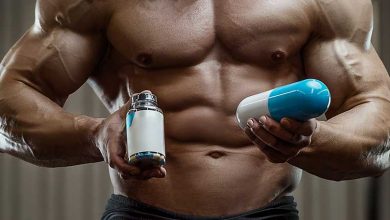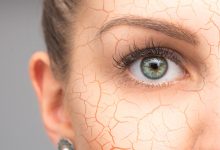The Rumble Device in Action: Real-World Applications
The Rumble Device in Action: Real-World Applications

The Rumble Device is revolutionizing the way individuals, businesses, and organizations gather and analyze data in real time. Known for its versatility, this device is now used across a range of industries, from sports and fitness to construction and healthcare. Designed to deliver precise feedback, track movement, and even improve safety standards, the Rumble Device is becoming a powerful tool in our technologically driven world. In this article, we’ll explore some of the practical applications of this cutting-edge device and how it’s transforming everyday tasks.
What is a Rumble Device and How Does it Work?
A rumble device is a type of feedback tool designed to record vibrations, movements, or other types of impact-based data. Its core purpose is to capture specific metrics that offer insights into performance, conditions, or environmental factors. These insights can be used to evaluate safety, optimize performance, or simply provide feedback for further improvements. With advancements in smart technology, today’s rumble devices often come equipped with GPS, accelerometers, and wireless communication features, making them highly effective and adaptable in various settings.
Rumble Device Applications in Sports and Fitness
The sports and fitness industry is one of the biggest adopters of rumble devices. Athletes, coaches, and trainers rely on these devices to monitor training conditions and measure physical responses during workouts or competitive events.
1. Performance Tracking
Rumble devices are used to track an athlete’s speed, strength, and endurance levels, providing real-time feedback that helps athletes improve their performance. In training environments, the device can detect subtle shifts in physical movement or posture, making it possible for trainers to assess areas where athletes might need extra support or adjustment. With detailed insights, athletes can pinpoint exact moments when their performance may have dipped, allowing for targeted adjustments.
2. Injury Prevention
In sports, injury prevention is critical. Rumble devices help coaches and trainers monitor the impact levels that athletes experience. For example, runners using rumble devices can detect imbalances in their gait or unexpected spikes in vibration levels that might indicate strain. By catching these early warning signs, athletes can make necessary adjustments to avoid injuries and stay in top condition.
3. Enhanced Training Programs
In high-performance sports, rumble devices allow for the customization of training regimens based on real-time data. This data-driven approach enables athletes and coaches to set up personalized training programs that optimize workouts, reduce overuse, and even enhance recovery processes.
Industrial Applications of Rumble Devices
The rugged build and precise data collection capabilities of rumble devices make them ideal for use in industrial environments. Whether it’s for monitoring heavy machinery or ensuring workplace safety, rumble devices have become essential tools in numerous industrial sectors.
1. Machinery Health Monitoring
In factories and other industrial settings, machine downtime can lead to significant financial losses. Rumble devices help prevent unplanned breakdowns by providing continuous monitoring of machinery vibrations. By analyzing these vibrations, technicians can identify when a machine part may be wearing down and needs servicing, thus avoiding sudden breakdowns. This proactive approach to maintenance helps extend the lifespan of machinery and improves overall productivity.
2. Construction Site Safety
Construction sites are high-risk areas where workers are often exposed to loud noises, vibrations, and other hazards. By integrating rumble devices into construction equipment, managers can monitor vibration exposure and ensure that it stays within safe limits. This real-time data helps to minimize workers’ exposure to dangerous vibration levels, reducing health risks such as hand-arm vibration syndrome (HAVS), which is caused by prolonged exposure to intense vibrations.
3. Structural Health Monitoring
Rumble devices are also used to monitor the structural integrity of buildings, bridges, and other infrastructure. These devices detect minute shifts and vibrations that may indicate early signs of structural weakness, such as cracks or material degradation. By catching these signs early, maintenance teams can take action to address potential issues, ensuring the safety of the structure and extending its life.
Healthcare Applications: Improving Patient Outcomes
In the healthcare field, rumble devices are gaining popularity for their ability to monitor patients’ movements and health metrics, especially for rehabilitation and elderly care.
1. Patient Rehabilitation
Physical rehabilitation programs require close monitoring of a patient’s movements, especially after surgery or injury. Rumble devices can track specific physical activities, helping therapists assess the patient’s progress and make adjustments to the treatment plan as needed. For instance, the device can measure how smoothly a patient moves or if there are any jerky motions that indicate pain or discomfort.
2. Fall Detection and Prevention
Falls are a major risk for elderly individuals, and rumble devices can play a key role in fall detection and prevention. By continuously monitoring movements, these devices can detect sudden shifts or vibrations that indicate a fall, alerting caregivers immediately. This real-time data is critical in environments such as nursing homes or assisted living facilities, where a prompt response to falls can significantly improve patient outcomes.
3. Health Condition Monitoring
Patients with chronic conditions like Parkinson’s disease or multiple sclerosis can benefit from rumble devices that track their daily movements. Changes in vibration levels or movement patterns can indicate a change in their condition, allowing for timely medical intervention. This type of continuous monitoring is invaluable for maintaining patient health and adjusting treatment plans as necessary.
Rumble Devices in Smart Cities and Environmental Monitoring
As cities around the world become smarter, rumble devices play an important role in enhancing public safety and environmental monitoring.
1. Traffic and Road Condition Monitoring
In smart city initiatives, rumble devices are being used to monitor traffic patterns and road conditions. For example, the device can detect potholes, uneven surfaces, or dangerous road vibrations, allowing city officials to prioritize repairs and maintain safer roads for drivers and pedestrians. Traffic flow can also be optimized with data from rumble devices, reducing congestion and improving urban mobility.
2. Public Transportation Safety
Rumble devices installed on public transportation vehicles like buses or trains help monitor ride quality and detect any unusual vibrations that could indicate potential issues. This data can be used to improve the safety and comfort of passengers, as well as reduce maintenance costs by identifying problems before they escalate.
3. Environmental Monitoring
Environmental agencies use rumble devices to monitor vibration and noise pollution in urban and rural areas. By gathering data on environmental vibrations, these devices can provide insights into the impact of construction, traffic, or natural activities like earthquakes on a specific area. This information is vital for developing policies to reduce pollution levels and improve residents’ quality of life.
Entertainment and Gaming: Immersive Experiences with Rumble Devices
In the world of gaming and entertainment, rumble devices have transformed the way users interact with technology, creating a more immersive experience.
1. Haptic Feedback in Gaming
Haptic feedback, which uses vibrations to mimic real-life sensations, is widely used in video gaming consoles and VR systems. Rumble devices provide players with physical sensations that correspond to on-screen actions, like feeling a jolt when their character gets hit or a rumble when driving over rough terrain. This added layer of realism enhances user engagement and provides a more enjoyable gaming experience.
2. Virtual Reality (VR) Experiences
In VR experiences, rumble devices contribute to sensory realism by delivering physical feedback in response to virtual interactions. Whether it’s simulating the feeling of holding a heavy object or mimicking environmental vibrations, these devices add depth and tangibility to VR experiences, making them more lifelike and engaging for users.
3. Music and Film Industry
Rumble devices are also making waves in the music and film industry, where they are used to create immersive experiences in theaters and at live events. When paired with sound systems, these devices enable audiences to physically feel certain sound frequencies, amplifying the emotional impact of the performance or scene.
In conclusion, the Rumble Device has evolved from a simple feedback tool to a versatile device with real-world applications in sports, healthcare, industry, entertainment, and even smart city initiatives. With its ability to capture precise, actionable data, the rumble device is set to play an even bigger role in the future as technology continues to advance.
Also read: Running Post









